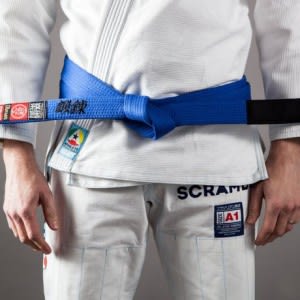


In jiu-jitsu, the suggestion to “have a gameplan” or to “stick to your game” is thrown around so often that sometimes we can forget to talk about what that actually means for your development as a grappler, which can be frustrating if you think you are supposed to have something but aren’t really sure what it is you are looking to develop.
A gameplan is akin to having a strategy. You have a set of go-to techniques that connect together and support each other, ultimately creating a coherent “path” for you to follow. When a match starts, you know what kind of takedowns or guard pulls you are going to do, and for each position along the way you know what your preferred move is and have a pretty good idea of how your opponent will counter, allowing you to have your own batch of re-counters stashed comfortably up your sleeve.
For example, your gameplan might be to pull spider guard. If your opponent resists your fundamental spider guard sweeps, you start to work lasso hooks to threaten more advanced sweeps while also hunting for the triangle and omoplata. If you get the sweep, you will probably end up in a knee on belly position because of the nature of spider guard sweeps, so a good portion of your top game might be built around knee on belly attacks and transitions.
And so on.
A gameplan is useful because it eliminates the guesswork of what to do and when. When you have spent a great deal of refining your game, it’s a lot like practicing laps on the same racetrack. Your timing gets really sharp, and if someone tries to race against you on your home track, they will have a hard time keeping up. You know what turns are coming. You know where the gravel is. You know where you can take risks and where you have to play it safe. Your opponent will not be nearly as comfortable because they haven’t spent as much time on this particular path as you have.
As your gameplan and style develop, here are 5 tips to keep in mind:
Instead of living permanently on any one extreme, alternate how you train to find a happy medium. For 2 months, play with new positions and ideas (being perfectly okay with the fact that you will fail a lot as you learn them). For the next 2 months, tighten your game back up, returning to your favorite moves and attacks as if you were preparing for competition. If you maintain this training pattern, you will start to see that every time you return to the competition mindset that a few of your experimental techniques follow along, becoming natural extensions of your primary game. Not every move will follow, maybe 1 out of 5, but your game will grow.
Keep training!
Your gameplan won’t materialize overnight. It will take to develop, and you will likely find your game evolving as you discover new facets of jiu-jitsu or are exposed to new techniques and ideas. This is part of the jiu-jitsu journey, and starting to think about your jiu-jitsu in this way will make your journey more fun and more productive.

Steel city is more than good martial arts......its good family

An outstanding place and people! My son looks up to all the instructors especially his Sensei and his son Santino, great guys!

A great place to train jiujitsu. Friendly and helpful athletes, nice space, and extremely clean. This school is for the all levels and abilities. Highly recommend.